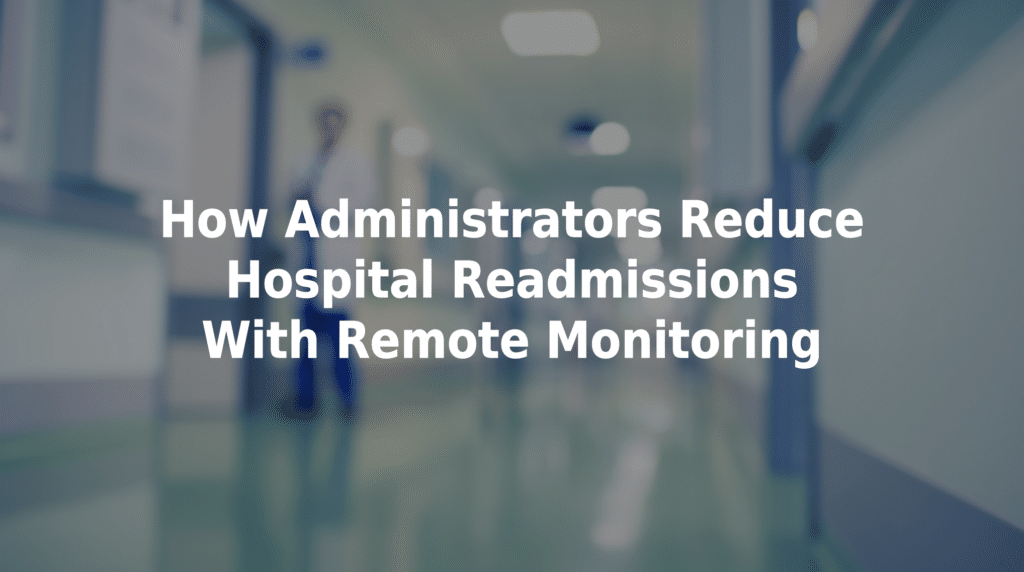How Administrators Reduce Hospital Readmissions With Remote Monitoring
For hospital administrators who want to modernize care and reduce preventable readmissions, remote monitoring offers a powerful solution. TriageLogic’s remote patient monitoring (RPM) program can be scaled to help hospitals provide continuous care beyond patient discharge. With 24/7 oversight and real-time alerts, your team can intervene early, improve outcomes, and enhance the patient experience — all while reducing unnecessary readmission costs. Let’s explore how administrators can reduce hospital readmissions with remote monitoring.
The Financial and Clinical Impact of Readmissions
Hospital readmissions are more than a patient care concern — they also pose financial and compliance risks. Under CMS’s Hospital Readmissions Reduction Program (HRRP), providers can face penalties for excessive readmissions, particularly for conditions like heart failure, COPD, and pneumonia.
For hospital administrators, reducing readmission rates is key to delivering value-based care, preserving reimbursement, and improving overall hospital performance.
How Remote Monitoring Prevents Readmissions
TriageLogic’s RPM platform helps hospitals monitor discharged patients in real time using wearable devices, mobile apps, and biometric sensors. Here’s how this proactive model reduces the risk of hospital readmission.
- Continuous Data Monitoring: Tracks key vitals like blood pressure, heart rate, oxygen saturation, and glucose levels.
- Real-Time Alerts: Notifies clinical staff immediately when a patient’s readings fall outside safe thresholds.
- 24/7 Nurse Triage: Trained registered nurses review flagged data and contact patients to assess symptoms and escalate care if needed.
- Integrated Patient Records: RPM data can be securely integrated into a hospital’s EHR, supporting coordinated, data-driven care plans.
This early detection and response framework allows care teams to manage deteriorating conditions before they become emergencies.
Best Practices for Reducing Readmissions With RPM
To maximize the effectiveness of remote monitoring, hospital administrators should consider the following strategies.
- Target High-Risk Populations: Enroll patients with chronic conditions, recent discharges, or frequent ER visits.
- Ensure Clinical Oversight: Pair RPM technology with trained nurse triage teams who can evaluate data and respond appropriately.
- Educate Patients and Families: Provide onboarding and training so patients understand how to use devices and why consistent monitoring matters.
- Align With Value-Based Metrics: Use RPM insights to improve HEDIS scores, lower utilization rates, and meet ACO or CMS quality benchmarks.
Why Hospital Administrators Choose TriageLogic
TriageLogic’s RPM program is uniquely suited for hospital systems seeking a reliable, compliant, and clinically supported remote care solution.
- Scalable Deployment: Programs can start small and expand across departments or patient populations.
- Clinical Expertise: Our team of RNs is trained in telephone triage and symptom evaluation to reduce clinical burden.
- Custom Protocols: Monitoring plans can be tailored to each patient’s condition, medication needs, and care goals.
- Data Security and Compliance: All systems comply with HIPAA and are designed for secure integration with a hospital’s infrastructure.
These features help hospitals reduce costs, increase operational efficiency, and align with the strategic goals of value-based care.
Take the Next Step Toward Lower Readmissions
TriageLogic helps hospital administrators achieve meaningful reductions in readmissions through clinically guided remote monitoring. If your facility is looking to improve patient outcomes and reduce penalties, it’s time to explore how our RPM program can work for your team.
Contact us today to request a demo!

